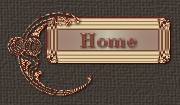

American Drama 565
Writing Assignments
Paper 1: Lillian Hellman's The Children's Hour
Due: Friday, Sep. 30
Length: 4-5 pages (typed, double-spaced)
Directions: Select one of the following topics:
- Hellman once said the play was about "lies," not lesbianism, but maybe that isn't really true. Maybe she was just trying to circumvent the censors who banned such subjects from the stage and films in the 1930s and 1940s. Would the play be as effective if all lesbian material were removed? On the other hand, maybe the play is really about homophobia, not lesbianism. What would be the difference? Discuss these issues and argue for or against one of these options.
- One critic has called this play "one of the more notoriously negative texts in the history of lesbian theater in the U.S." Discuss the ambiguous treatment of the lesbian themes in the play. What exactly is or is not confessed at the end? Why does Martha commit suicide? Are any other characters lesbian or latent-lesbian? Is the definition of lesbianism finally offered by the play positive or negative?
- Is Hellman right, and the play is really about lies? Why does Mary lie? Is it only her lies that bring about the tragic consequences? Or are there other lies that contribute to it? To what extent? What are the reasons for the other lies?
- Is the rather long and drawn-out Act 3 anti-climatic, as some critics claim, detracting from the focus on the revelation of the "truth" about Mary's lie, or does it have a sense of tragic inevitability? In other words, is Act III, in fact, "the play," as Hellman once stated? However, she also said, "The play probably should have ended with Martha's suicide: the last scene is tense and over-burdened. I knew this at the time, but I could not help myself. . . . I cannot avoid, it seems, that last summing-up."
As you study the play, develop a solid thesis about your topic--some conclusion you have arrived at--and make sure you cite lots of examples and details from the play to support and illustrate your thesis and sub-points. And make sure you discuss and explain your evidence.
You may want to consult some background material on Hellman's life and/or the play listed online on our Resource page.The assumption is that this paper will be your own analysis without assistance from any secondary sources, so if you consult any outside sources, you must document, following MLA style (see MLA directions).
As part of this assignment, also review the concept of the realistic well-made play and take the following short definition of "realism" into consideration as you ponder your thesis: "Modernist realism works in dualistic alternatives: Is Martha lesbian or not? Out of such questions, audiences [of realistic plays] are trained to construct binaristic themes: appearance versus reality; art versus nature; and so on. These are derived from the view of reality that is hierarchical, with outer life (appearance) as less important than inner life (reality). Acting styles are constructed to embody both inner and outer person in a layered effect so that audiences can read both levels of character. At the end of the modernist realistic play there is closure and full revelation of the hidden or inner realities. . . . [T]he conventions of realism require the enigma to be revealed at the end so that the reader feels the power of knowing all as outside observer and judge of the work.
You should also consult the sections on this page on Organizing your Paper and Avoiding Plagiarism and MLA style and Typing Directions.
Paper 2: Arthur Miller's Death of a Salesman
Due: Monday, Oct. 31.
Length: 6-8 pages (typed, double-spaced)
Directions: Select one of the following topics: (more information forthcoming)
- Is Willy's obsession with the past a case of Alzheimers or a search for meaning?
- Given all his flaws and failures, why does Willy deserve to be remembered, as is declared in the closing scene?
- Analyze the two sons as manifesting and reflecting the two sides of a conflicted Willy.
- Discuss the conflict between the natural environment and the (man-made) urban environment as it pertains to the dilemma of Willy and his sons.
- Is Miller's play a tragic drama affirming life and human potential or a naturalistic drama of pathos and defeat?
NOTE: In class, we will be viewing selections from the video of Miller's play. However, we will leave most of the actual analysis of the play itself to you.
You should also consult the sections on this page on Organizing your Paper and Avoiding Plagiarism and MLA style.
Organizing your Paper
All essays should include these three basic parts:
Introduction
Introductions in shorter papers should be somewhat short--maybe 4-5 sentences long. Begin with some general statement about your topic (if you are going to write about the American dream or Willy Loman, get those words, plus the author and title, somewhere in the opening sentence). Perhaps provide some pertinent background, or explain how your topic will enrich our understanding of some aspect of the literary work(s). Most of the introduction will be your own writing, but it is all right to include short paraphrases/quotations, properly cited, of course. End the paragraph with your overall thesis/conclusion. Remember that your thesis is what the rest of the paper will be about.
Body of Paper:
Since you can't talk about everything at once, sub-divide your thesis/conclusion into 5-6 sub-points. Those sub-points will form the topic sentences-- your own writing, what you have to say about that subject, the point you want to make--for the body paragraphs.
WRITING TIP: Arrange your sub-points according to the Order of Climax-- begin with your second-best sub-point followed by your weakest sub-point and then work your way up to your best sub-point at the end so that the paper finishes on a strong note.
Each topic sentence should be followed by lots of specific details and examples and short quotations, etc., from your texts, as well as your explanation/analysis of that information.
NOTE: I hate skimpy paragraphs that are only 1-2 sentences long; put some meat on those bones--another 6-7 sentences of details and examples and explanations, please!)
For quotations, include a page number (in parenthesis) directly after the quote. Avoid long quotations in short papers. It is often much more effective to work a quoted word or short phrase into your own sentence.
Conclusion:
Conclusions in short papers should be short--maybe 3-4 sentences long. Begin the concluding paragraph with a re-statement of your opening thesis/conclusion--but in language very different than was used in the introduction. In a couple more sentences, refer to your topic as a whole-- why it is significant and worth studying, for instance, or finally, what it all adds up to.
NOTE: In a short paper, do not repeat your sub-points--much too repetitious!
See also Typing Directions and Avoiding Plagiarism and MLA style.
Avoiding Plagiarism
- The language used for paraphrases/summaries should be very different than the
original language used by your source.
- The language used in quotations must be exactly the same as the original language
used by your source.
- Quotation marks must be used around all quotations. If you have a
quote-within-a-quote, use a combination of double and single quote marks (see me for
assistance).
- Cite a source for ALL summarized and paraphrased and quoted secondary material (articles on your topic, etc.).
See also Organizing your Paper and MLA style and Typing Directions.
Citing Sources, MLA Style
See this short summary of MLA style: Using Modern Language Association (MLA) Format, created by the Purdue University Online Writing Lab. It gives the basic "rules" for in-text citation and bibliographies, including how to list Electronic Sources. See also MLA Style: Frequently Asked Questions.
Put all documentation on a separate bibliography page (labeled "Works Cited") and follow MLA directions.
For more detailed information on MLA style, consult a hardcopy of the "official" MLA Handbook.
See also Organizing your Paper and Avoiding Plagiarism and Typing Directions.
Typing Directions:
Use Times New Roman font, size 11 or 12. Double-space everything--no exceptions. Use one-inch margins on all sides. Include your last name and page number in top-right corner (1/2 inch from top).
On the first page, in the top-left corner, put your name, your instructor's name, the class name and number, and the date. Below that, in the center of page, add a title.
See an MLA example (scroll down the page): Paper Format--Example
Put all documentation on a separate page and follow MLA directions.
See Organizing your Paper and Avoiding Plagiarism and MLA style.
Background set by: Quest Graphics Design



